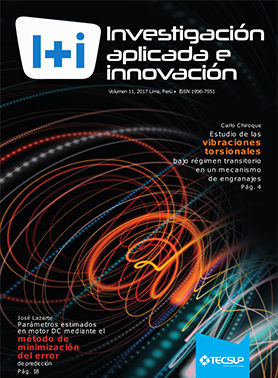Treatment of Efluents by Protein Precipitation in Industrial Production of Soy Sauces
DOI:
https://doi.org/10.71701/nqtrez60Keywords:
Soy sauce, BOD, COD, protein precipitation, advanced oxidation, Fenton, CAPEX, OPEXAbstract
The main raw material of oriental sauces is soy, in addition other organic additives, microorganisms and enzymes for fermentation generated in the process biochemistry. This produces high organic contamination evidenced in the high average value of initial chemical oxygen demand (COD) of 1,746 mg/L, while Peruvian regulations require a maximum of 1,000 mg/L of COD in the sewage network discharge. The study focused on advanced oxidation methods (oxidation technology that generates hydroxyl radicals during its process, without producing more dangerous pollutants). Four different methods were applied. The pollutant removal efficiency is evaluated to identify which methods reach COD levels under the maximum admissible values (VMA), according to current regulations of the Peruvian Ministry of Housing, Construction and Sanitation. We then analyze the economic viability, defined for the present study by the OPEX costs of chemical products. Based on it, the most appropriate method to design a pilot project in the plant and to check dosages of chemical reagents, retention times and operating variables is determined. Laboratory tests showed that the treatment technology that best meets criteria described above is the sequence alkalization - protein precipitation - coagulation - flocculation, followed by solid - liquid separation with the stages of clarification, filtration and adsorption with activated carbon.
Downloads
References
Crites, R. y Tchobanoglous, G. (2000). Small and Decentralized Wastewater Management Systems. Boston: McGraw-Hill.
Valores Máximos Admisibles (VMA) de las descargas de aguas residuales no domésticas en el sistema de alcantarillado sanitario. DS. 00-2015 (09 de enero del 2015). En Normas Legales, N° 544502. Diario Oficial “El Peruano”. Lima: Ministerio de Vivienda Construcción y Saneamiento.
Gastronomía & Cía. (2011). Moromi. Recuperado de https:// gastronomiaycia.republica.com/2011/01/16/moromi/
Gómez, L., Urkiaga, A., Gutiérrez M. y De las Fuentes, L. (2000). Foto oxidación de vertidos químicos: revisión y experiencias de procesos de oxidación avanzada. Ingeniería química, 32 (371), 211-216.
Lombraña, J., Varona, F., Menéndez, A. y de Luis, A. (2009). Kinetic study and hydrogen peroxide consumption of phenolic compounds oxidation by Fenton’s Reagent. Korean Journal Chemical Enginering, 26 (1), 41-48.
Orozco, C., et al. (2005). Contaminación ambiental. Una visión desde la química. Madrid: Editorial Thomson.
Salas, A. (1993). Recuperación e identificación de las proteínas sarcoplasmáticas eliminadas en la elaboración de Surimi de sardina. (Tesis de Ingeniero), Universidad Nacional Agraria La Molina, Lima.
Severiche, C., et al (2013). Manual de métodos analíticos para la determinación de parámetros fisicoquímicos básicos en aguas. Cartagena de Indias: Biblioteca Virtual Eumed. Recuperado de www.eumed.net
Ranade, V. & Bhandari, V. (2014). Industrial Wastewater Treatment, Recycling, and Reuse. Oxford: Elsevier.
Yáñez, F. (1998). Criterios para selección de sistemas de tratamiento de aguas residuales. Lima: Centro Panamericano de Ingeniería Sanitaria y Ciencias del Ambiente (CEPIS).
Salsa de soja (2017). Salsa de Soja china y japonesa ¿conoces los diferentes tipos?. Recuperado de http://salsadesoja.com/conoces-la-salsa-soja/
Facultad de Química (2011). Estructura de los aminoácidos. Mexico D.F: Departamento de programas audivsuales - Universidad Nacional Autónoma de México. Recuperado de http://depa.fquim.unam.mx/proteinas/estructura/EPamm1.html
Downloads
Published
Issue
Section
License

This work is licensed under a Creative Commons Attribution-NonCommercial 4.0 International License.


